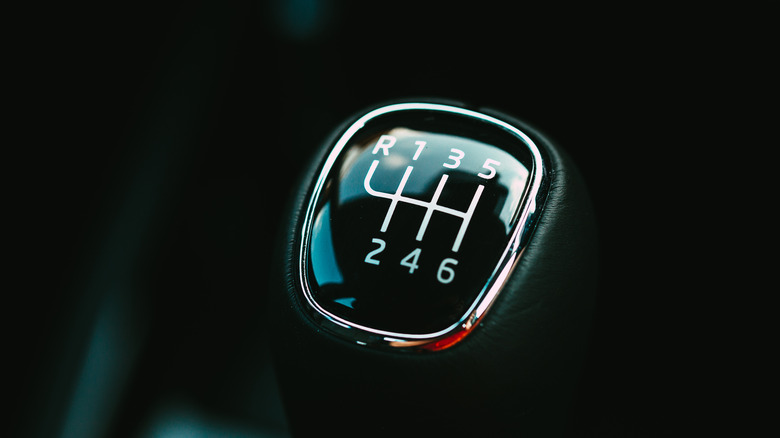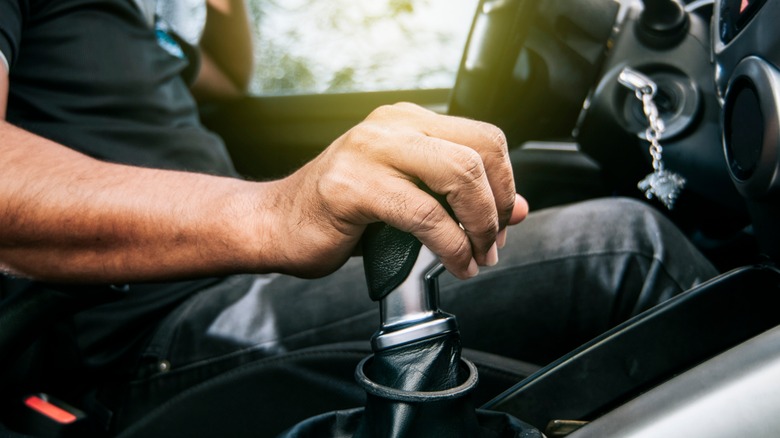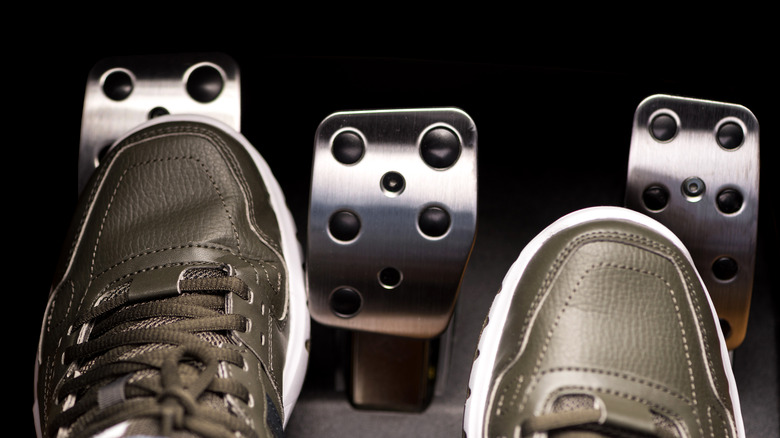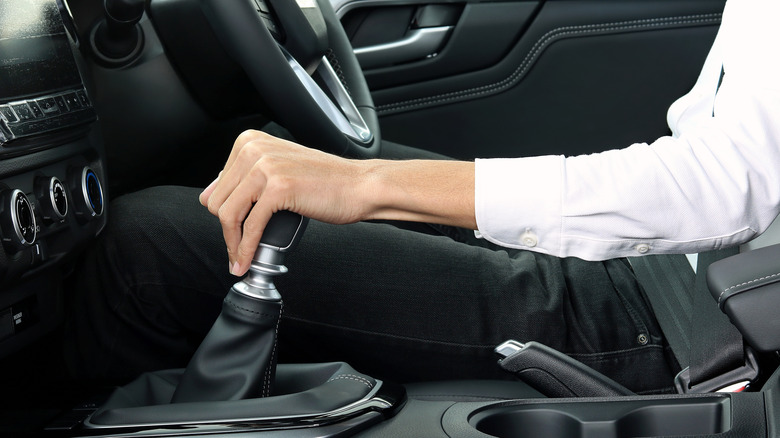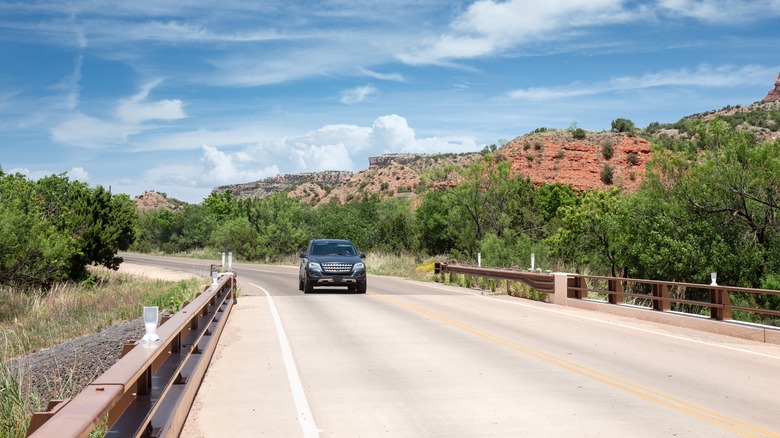5 Things You Need To Stop Doing If You Drive A Manual Transmission Car
While stick-shift cars aren't in vogue anymore, with automatic shifters being the industry standard, there are still plenty of older and custom rides out there with manual transmissions. As long as you know how to shift gears properly, it's a fun way to drive, keeping you fully engaged with the road and allowing you to open up the engine and feel the horsepower.
However, compared to driving with an automatic transmission, there are more things that can go wrong with a manual transmission, and we don't just mean the engine stalling out because you forgot to change gears. Using a manual shifter puts the responsibility of your car's finer control aspects on you, which means you need to treat it properly and follow the rules, lest you end up damaging your gearbox and clutch or mucking up your engine. Driving a manual is all about feeling out the finer points, so consider dropping these habits as a part of that process.
Resting your hand on the shifter
While you're driving around in your manual car, you're probably going to do a fair amount of gear shifting on a regular basis, especially if you're cruising the highway and need to get up to higher speeds. It's the whole point of a manual transmission, after all. However, it's important that, after every time you shift gears, you fully remove your hand from the shifter.
You may be tempted to leave your hand on the shifter, especially if you've been shifting a lot, but this isn't good for the gearbox. The components of the shifter are very minute and sensitive, as they need to be to allow for clean shifting, so even the slightest bit of unnecessary pressure can strain them. You won't instantly break your shifter by resting your hand on it, but you might speed up the rate at which the parts wear out, necessitating more frequent maintenance trips.
Resting your foot on the clutch
In a similar vein to the gear shifter knob, you probably frequently use the clutch in the footwell as a footrest. This isn't entirely your fault — a lot of modern cars with automatic transmissions have a footrest where the clutch usually is, so if you're used to driving that kind of car, you're probably doing it out of habit. However, that's a habit you should break.
Obviously, you engage the clutch when it's time to shift gears, and much like the shifter, the clutch is a very sensitive piece of equipment that responds to even minute changes in pressure. If you rest your foot on the clutch, even without pushing it in all the way, you could inadvertently engage it. Not only is this rough on the gearbox, but if you have your hand on the shifter, you may accidentally shift gears at the wrong time.
Staying in gear while stopped
Whenever you come to a complete stop in a manual transmission car, such as at a stoplight or stop sign, you're supposed to shift the gear into neutral and leave it there until you start moving again. This can be a little annoying, especially if you're stuck in a traffic jam that's constantly starting and stopping. In such a circumstance, you may be tempted just to leave the shifter in first gear so you don't have to bother with the clutch. However, there's a reason manual driving instructors tell you not to do this.
Leaving your car in gear while stopped, even if it's first gear, puts a lot of strain on the gearbox parts, especially the clutch. That's a lot of engine vibration that's getting applied to your clutch, slowly but surely shaking it to pieces like a jackhammer. It's annoying to keep shifting in a traffic jam, but you'll have to put up with it in the name of your car's good health.
Shifting without the clutch
Whenever you shift gears on your manual transmission, you need to push the clutch all the way in to fully unlock the shifter. If you're in the heat of the moment, though, you may accidentally forget to push the clutch in before you shift. The lever will still move even if the clutch isn't pressed down, albeit with much more resistance, and once you realize this, you might start forgoing the clutch entirely. It may feel kind of cool to shift gears with brute force like that, but your car definitely doesn't appreciate it.
Forcing the shifter to change gears without engaging the clutch is kind of like kicking down a locked door — you'll technically open the door, but don't be surprised if it doesn't close properly after that. Forcing the shifter is quite possibly the worst thing you could do to your gearbox, and if you're unlucky, you could end up locking the pins entirely, leaving your shifter limp and useless.
Coasting in neutral
Coasting is an old trick utilized by some drivers to save some gas on long trips. Letting go of the gas when going downhill and letting the car carry itself instead of burning fuel to keep the engine pumping. With a manual transmission, you can accomplish this by switching to neutral and taking your foot off the gas and clutch. This may seem like a great way to improve fuel efficiency, but it's very dangerous.
When you're coasting in neutral, your car has drastically reduced functionality. Usually, while driving in high gear, if you wanted to slow down, you could downshift for an engine brake, which is safer and better for your car's drivetrain than a traditional brake. If you're in neutral, though, that's not an option. You can still use your brakes, but if you're rolling downhill at high speed, it will still be an extremely rough stop and possibly not fast enough if there's an obstacle in your way. Coasting in neutral is actually illegal in several U.S. states, so even if you save some money on gas, that money is going right back out to pay for your violation tickets.
